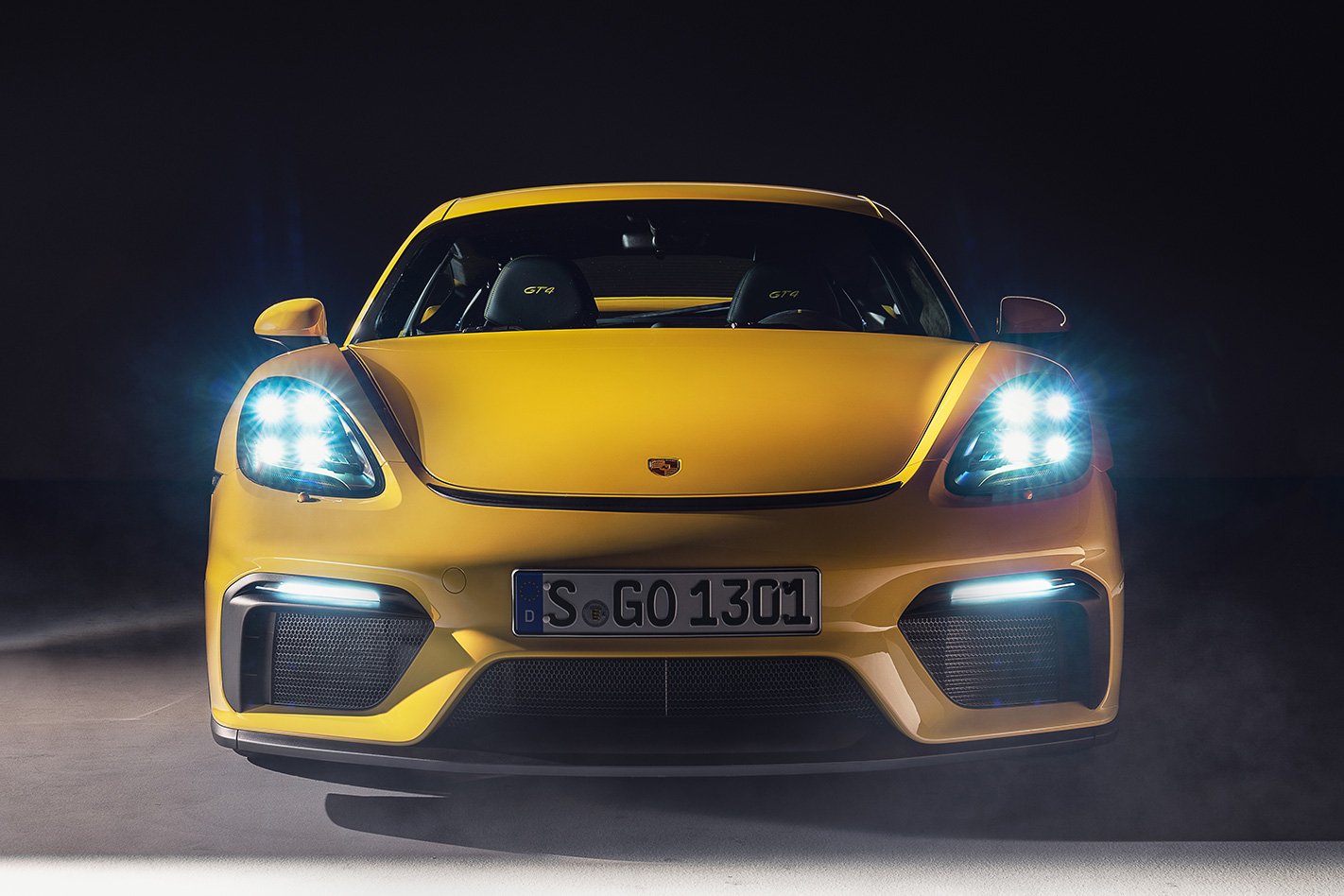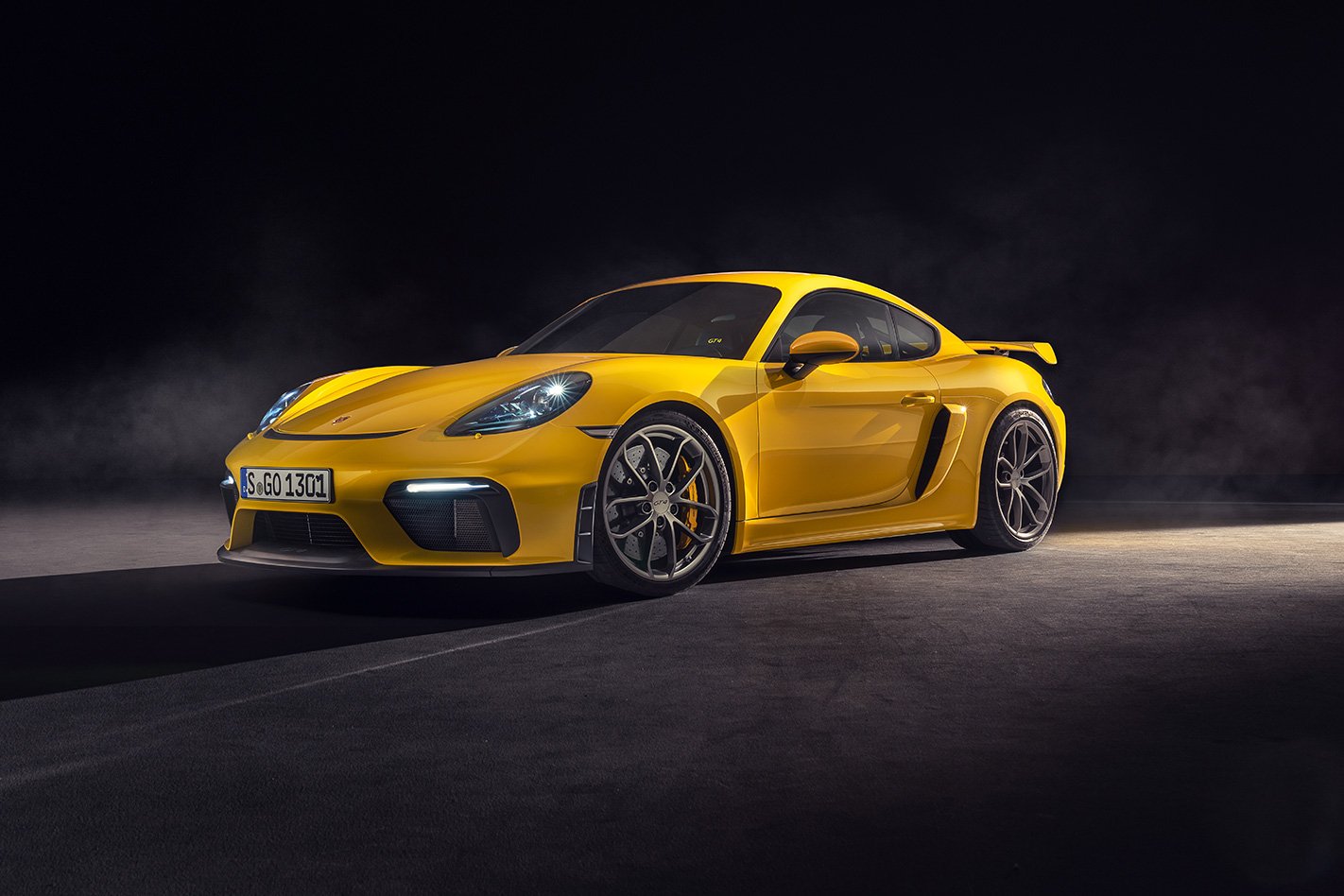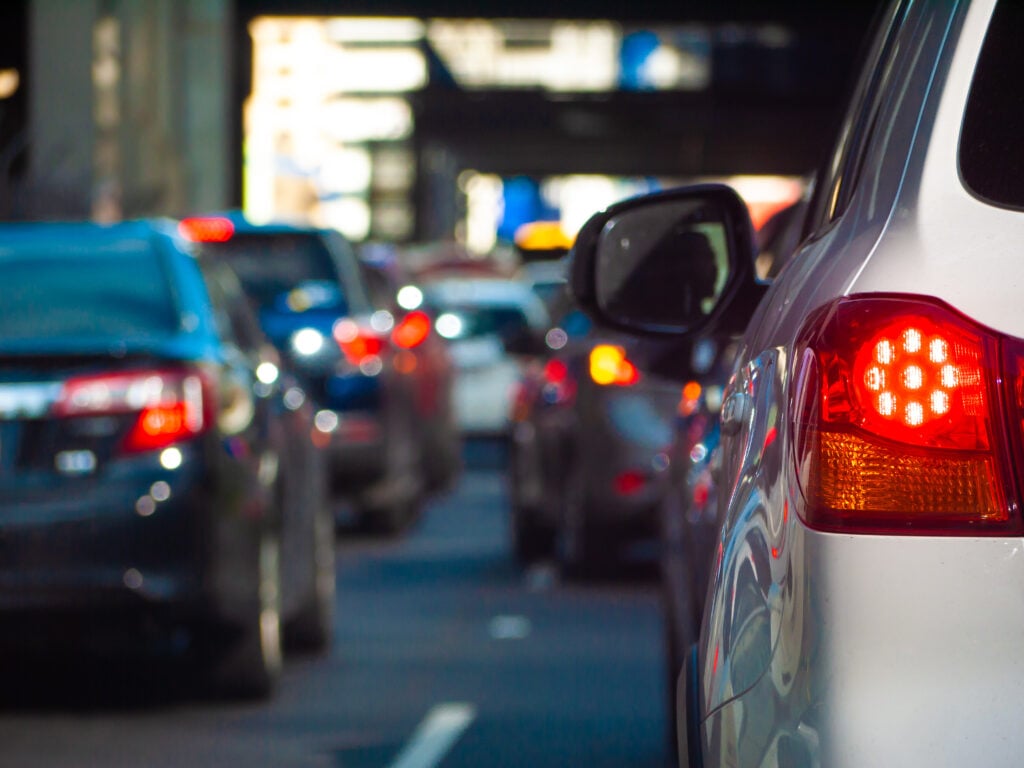Porsche has pulled the sheet off its hyped 718 Cayman GT4 and Boxster Spyder relation. While it looks similar to the car we knew before, it delivers a masterpiece we wanted underneath – an all-new 4.0-litre naturally-aspirated flat-six.

Though both the 911 GT3 and the new GT4 features a 4.0-litre flat-six, the new engine is not simply a detuned version of the GT3 unit, it is based on the 992 Carerra S’s 3.0-litre mill.
Due to emissions regulations it features cylinder deactivation for efficiency, and has a different bore and stroke. It ends up at 4.0-litres capacity and produces 309kW at 7600rpm and 420Nm from 5000-6800rpm. Redline is a cracking 8000rpm – 1000rpm short of the blood curdling GT3.
Porsche made the decision to carry the GT4’s manual-only legacy, with the PDK automatic considered only shortly before being tossed aside. New for the drivetrain in the Cayman is ‘Auto Blip’ – the rev-matching feature used in the 911 Speedster and that can be switched off.

The result is that accelerating from a standstill to 100km/h takes just 4.4 seconds, and smashing on to 200km/h is 1s faster than in the previous GT4. Its top speed is a whopping 304km/h.
Though the car is designed to offer a pure, fun driving experience, ultimate track performance has taken a step forward, with Porsche claiming the GT4 is 10 seconds faster around the Nurburgring:
“If you’re looking for pure track capability, it’s at least 10 seconds quicker [around the ‘Ring] than its predecessor,” says the boss of Porsche’s GT road-car program, Andreas Preuninger, during a preview walk around of the new GT4.
Its substantially quicker time is a result of the combination of revisions made to every area of the car including the latest damper technology, ABS calibration, dynamic transmission mounts and next-generation steering. Preuninger says there is “lots of feel and a lot of connection.”
The rim sizes are unchanged from the previous-gen car, so 245/35 ZR20 front and 295/30 ZR20 rear tyres, wearing Michelin Pilot Sport Cup2 tyres.
Preuninger tells us the tyres are, “new spec, but not ultra-rated super track day tyre, they’re more an ultra high performance all-rounder.”
The Michelins are fitted to a new wheel design, which retains a five-stud fixing, rather than the centre-locks of the GT3 – another concession to price and market position. PCCB (Porsche Ceramic Composite Brakes) shown in these images on the GT4 by yellow callipers behind its wheels are a cost option on both models.

Both GT4 and Spyder features the latest version of Porsche Torque Vectoring allied to a mechanical locking diff, Porsche Stability Management which allows ESC off and Traction Control off, as well as sports PASM (Porsche Active Suspension Management) sitting some 30mm lower than a typical 718. PASM offers the usual button-push choice between two suspension mode but as the setup borrows heavily from the GT3 the chassis offers additional adjustability for owners to set up the toe, camber and anti-roll bars manually.
Ball joints feature on the top mounts at the front and rear and while further solid connections were considered, Preuninger admits that the rest of the suspension bushes are conventional so as not to compromise its on-road performance.
Visually, the new GT4 doesn’t look substantially different to the car it replaces. However, as with every new model from the GT department, aerodynamic advances have taken a sizeable step. The front splitter protrudes a little bit further forward, while the rear wing features new end plates and a slight gurney to create a low-pressure area to bring the rear into balance. The rear wing, which is situated on aluminium struts, remains adjustable, as do elements in the front aero package.
The key gains aerodynamically, admits Preuninger, are along the sides and underneath the car. Fore of the front wheel is an additional aero element, helping remove turbulence from the car’s flanks and venting the airflow around the front wheel well. At the rear there’s a prominent diffuser, this being where the biggest gains were made.

The net result is a car that is, “faster round the ring than the GT3 a couple of years ago.”
Being a GT department model means weight was always approached with a scalpel, but it still hits the scales heavier than before – the quoted kerbweight for the new GT4 is 1,420kg, compared to 1,340kg for the old model.
Preuninger is quick to point out that the way the cars are homologated is now different. The homologated weight now must be with no options, and before it was previously legal to quote a kerbweight with the optimum specification.

“There are so many boxes to tick that make the car lighter so this car nominally is about 60 or 80 kilos heavier on paper but it’s only about 30 kilos heavier in real world if you compare apples to apples.”
Cost-option weight removal comes in the form of doing without climate control and the PCM communication and stereo equipment, while PCCB, lightweight carbon-backed bucket seats all help shift weight via the options list. The familiar Clubsport package is also offered if you want a half cage, ignition cut off, fixed harnesses and a fire extinguisher.
Ticking all of those boxes brings the weight down to around 1340kg – inline with the previous generation model. So as heavy as before but with more power and grunt.
While sculpted for the track, Australian specification Cayman GT4’s will come loaded with extra kit as standard including bi-xenon headlights, reversing camera, automatically dimming mirrors with rain sensor, ambient interior lighting, infotainment system with Apple CarPlay and sat nav, two-zone climate control and heated seats
Porsche will launch the Cayman GT4 in Europe later this year, and Porsche Australia has confirmed it expects local deliveries to commence from Q1 2020.
Pricing for the Cayman GT4 is $218,800 and for the Boxster Spyder $209,000.





